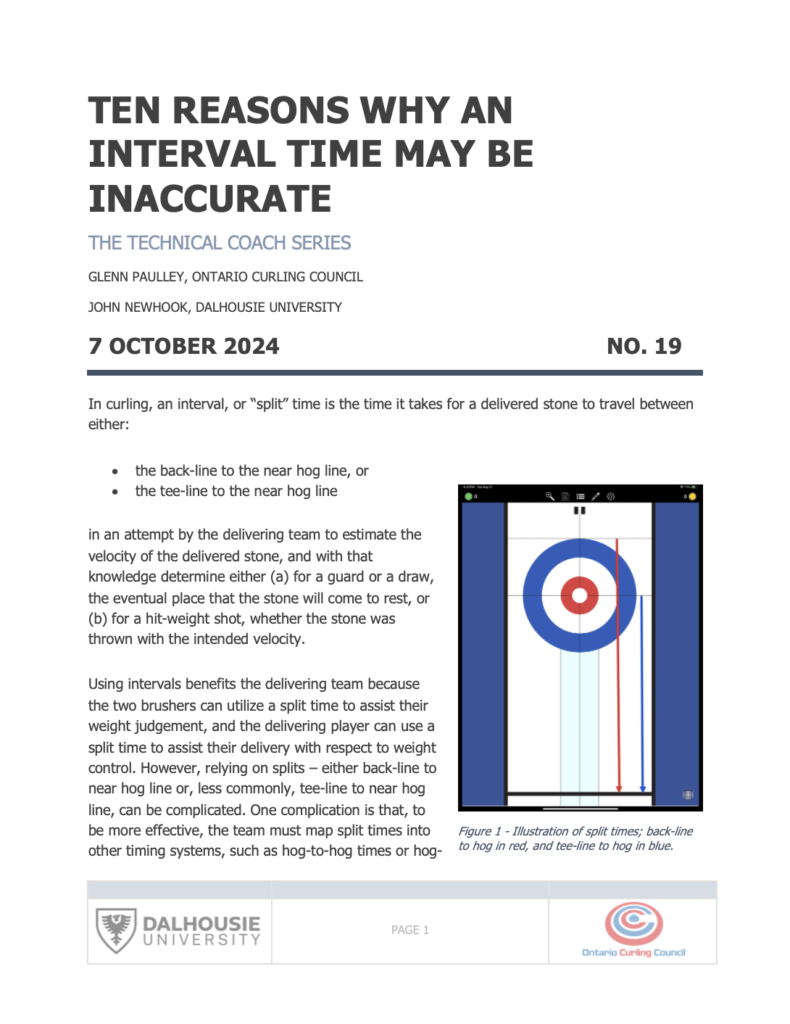This article is joint work with John Newhook of Dalhousie University in Halifax.
Using interval, or “split” times, can benefit the delivering team because an interval time provides a proxy measurement for the velocity of the stone at release. With an interval time, the two brushers can utilize the time to assist with their weight judgement, and the delivering player can use a split time to assist their delivery with respect to weight control.
However, relying on splits – either back-line to near hog line or, less commonly, tee-line to near hog line – can be complicated. One complication is that, to be more effective, the team must map split times into other timing systems, such as hog-to-hog times or hog-to-far tee-line times if they are to utilize the throws of the opposition team to help judge the speed of the ice.
But the mapping of split times is by far not the only complication in their use. In this article we describe ten reasons why split times may be inaccurate. Many competitive teams will already be familiar with many of these reasons – and frankly some of them are quite obvious – but we offer a detailed description to assist younger athletes or coaches with less experience.
This article, the 19th in our Technical Coach series, goes into some detail surrounding the circumstances by which an interval time may give an inaccurate estimate of the velocity of a curling stone. To entice you to read the entire article, we list three of the more interesting points below:
- It is difficult to accurately time a moving object with a stopwatch, in this case the curling stone, to within 0.05 seconds. Since there exists two possibilities for introducing error – one at the beginning of the interval, and the other at the end – it can be commonplace for the total interval time to be off by a tenth of a second (0.10). However, on keen ice, a tenth of a second difference as an interval will result in a difference of six feet of distance for draw weight.
- The rules of the game permit stones of various weights, necessary since granite is a naturally-occurring substance. But two stones of different mass thrown at the same initial velocity will likely not end up in the same place.
- Not all curling clubs have well-insulated ice sheds, so there may well be differences in ice temperature between one end of the arena and the other. This difference will result in a variable coefficient of granite-ice friction. As a result, the speed may be different going in one direction than in the other.
